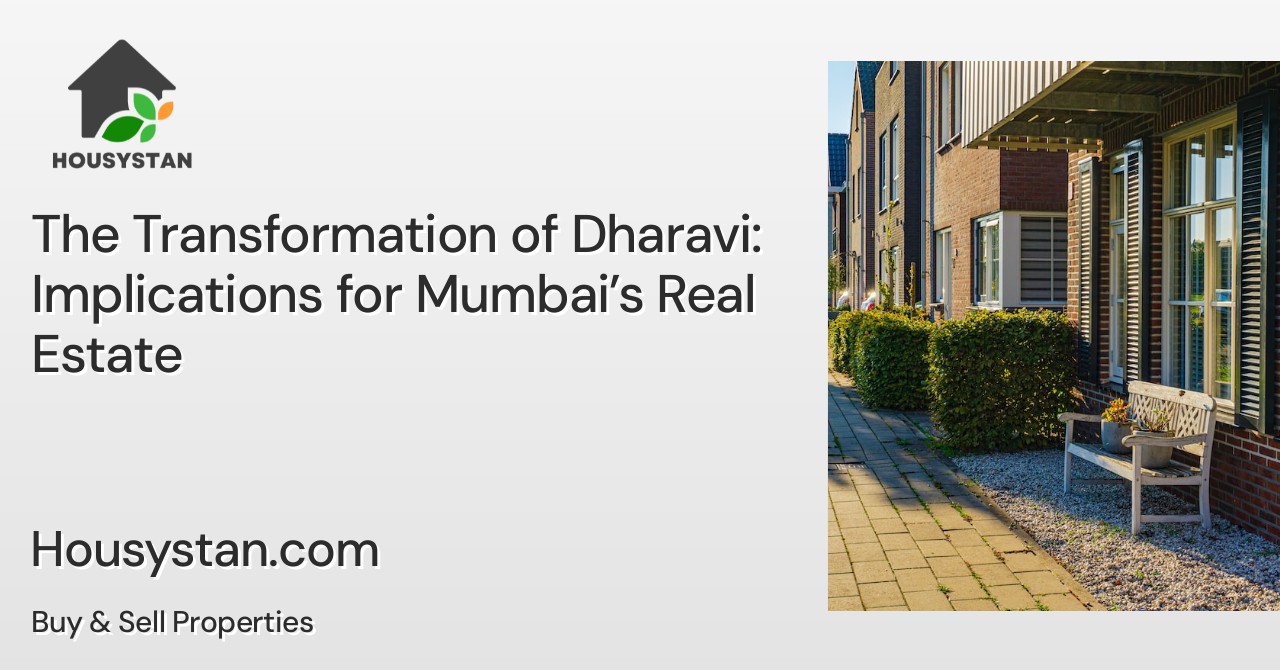The Transformation of Dharavi: Implications for Mumbai’s Real Estate
Read latest blogs and articles from Housystan

The Information mentioned here was last updated on:
4/12/2025The Transformation of Dharavi: Implications for Mumbai’s Real Estate
Dharavi, situated in the heart of Mumbai, is undergoing one of the most ambitious redevelopment projects in India’s history. Known as Asia’s largest slum, Dharavi has long symbolized the resilience and spirit of Mumbai’s people. However, with the government-backed Dharavi Redevelopment Project gaining momentum, the landscape of this iconic locality is set to change dramatically, bringing far-reaching consequences for the city’s property market.
The transformation of Dharavi aims to replace informal settlements with modern infrastructure, improved sanitation, and upgraded housing facilities. This initiative is not only expected to enhance the quality of life for current residents but also to unlock significant value for Mumbai’s real estate sector. By converting underutilized land into organized residential and commercial zones, developers are opening new opportunities for investment and urban expansion in a city where space is at a premium.
- Verified Tenants/Buyers
- Unlimited Property Listing
- Zero subscription/charges fee
For investors and property buyers, the redevelopment of Dharavi represents a landmark opportunity. Strategic location, close proximity to key business districts like Bandra-Kurla Complex (BKC) and Lower Parel, and enhanced connectivity through upcoming metro lines are set to make this area a hotbed for real estate appreciation. As modern apartments, office spaces, and retail outlets emerge, the demand for property in and around Dharavi is projected to rise, potentially driving up prices and rental yields in nearby neighborhoods such as Sion, Mahim, and Matunga.
Moreover, the transformation is likely to have positive socio-economic effects, fostering community development and creating job opportunities. The introduction of green spaces, educational institutions, and healthcare facilities will further increase the appeal of the region, attracting both end-users and investors looking for promising returns in Mumbai’s competitive property market.
In summary, the redevelopment of Dharavi marks a pivotal moment for Mumbai’s urban evolution. As the project progresses, it is expected to reshape the city’s real estate landscape, setting new benchmarks for inclusive growth and sustainable urban planning. Stakeholders, investors, and residents alike stand to benefit from this historic transformation, making Dharavi a focal point for Mumbai’s future growth and prosperity.